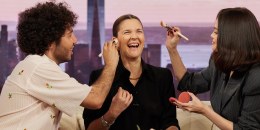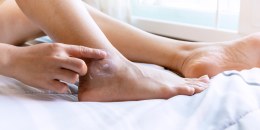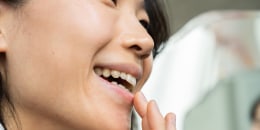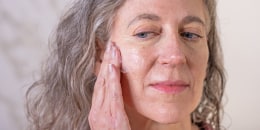For reasons I can't quite wrap my head around, I'll happily saddle up to a 50,000-megawatt laser at the dermatologist's office — even if it starts with face-numbing cream that leaves me looking like a zombie.
While I'll fry and needle my skin without fear, there's one treatment that truly terrifies me: facial cupping.
Maybe it has something to do with the bruises I've seen on the likes of Michael Phelps and Gwyneth Paltrow? I imagine those big, splotchy, circular bruises, but on my face — yikes! As it turns out, my initial judgment was a bit premature. More on that later.
What is facial cupping?
The ancient practice of cupping uses suction cups directly on skin to promote circulation and relieve muscle tension. When it comes to the face and jawline, the practice even claims to help with sinus congestion and headaches.
Its beauty claims are even bigger: reducing puffiness, softening fine lines and wrinkles, stimulating collagen and helping products absorb more easily. I was skeptical.
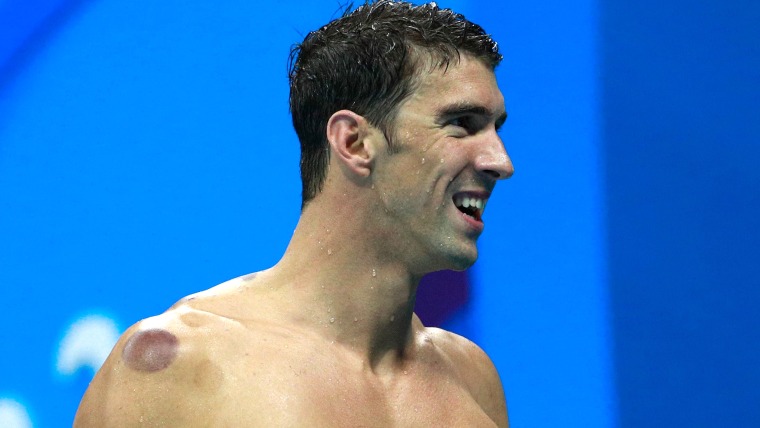
But what is the process actually doing? As it was explained to me, the cups gently pull at sections of facial tissue, separating the skin from the bone as they move along the forehead, cheeks and jawline.
"The fascia is a sheet of connective tissue, primarily collagen beneath the skin, that gives skin elasticity and firmness," explained Cara Frank, founder of Six Fishes Acupuncture in Philadelphia when I visited her office. "During cupping, fascia gets a good stretching ... while restoring fresh-skin tissues."
Dr. Neal Schultz, New York City-based dermatologist, host of DermTV.com and creator of BeautyRx by Dr. Schultz was less enthusiastic. “Facial cupping is apt to temporarily decrease wrinkles from swelling then increase them much more from the repetitive motion that breaks collagen and elastic fibers,” he said, cautioning that cupping may promote broken blood vessels and may only offer slightly better product absorption benefits.
While that information in mind, I took a deep breath and held my stack of heavy-duty concealers close. It was go time.
The first step was cleansing. Beata Maslanka, a certified acupuncturist at Six Fishes, gave my skin a gentle sponge bath with lukewarm water and organic cleansers. It's an important step that paves the way for step two: lubricating the skin.
This allows the cups to easily glide over the skin, a key difference between body and facial cupping, according to Maslanka. The cups move continuously with facial cupping, so there's a much lower incidence of bruising. Body cups, meanwhile, sometimes rest in the same place for 30 minutes or longer, which causes those unsightly spots.
Let's use the tools!
Maslanka pulled out four cups in varying sizes. The smaller are used for detail work around the nose and eye sockets; the larger are used on the cheeks and forehead.
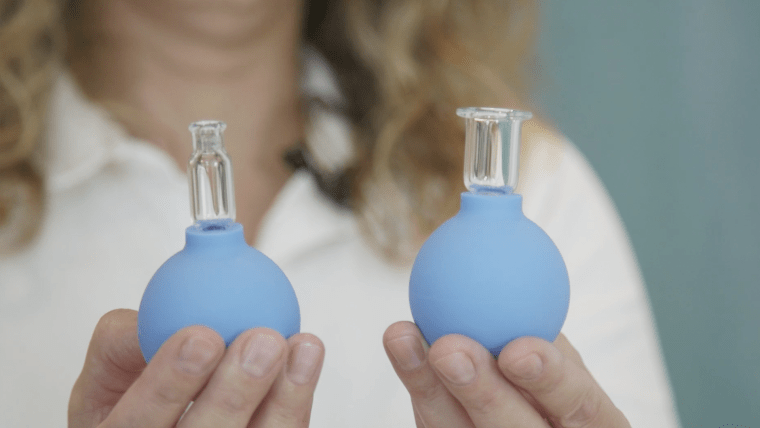
She suctioned the first cup above my nose and moved it between my brows and hairline. "It's not so bad," I shouted out in shock. You can definitely feel your skin being pulled from your skull, but, surprisingly, it's not a bad feeling at all. In fact, it's quite relaxing. Who knew?!
Maslanka moved onto my temples. That's the place we all rub when we feel a headache coming on, right? The circular pattern felt like a mini massage and I was more relaxed by the minute. This felt more like a luxurious spa treatment than I ever imagined.
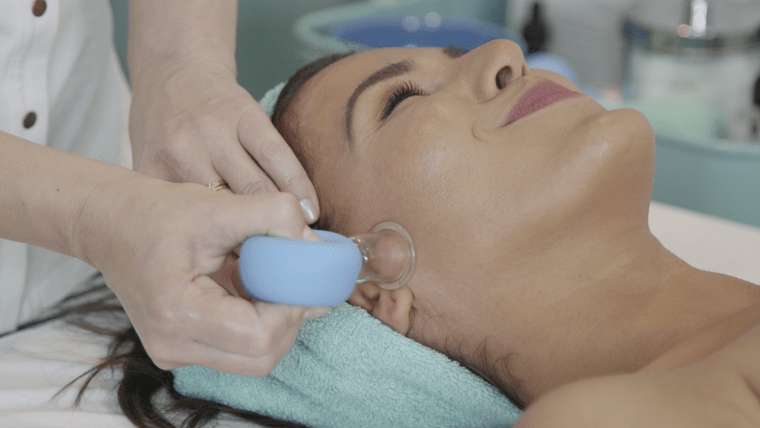
As she moved onto my upper jawline, Maslanka mentioned she'd be tackling lymphatic drainage. Lymph nodes are located throughout the body with groups in your neck, armpits and other areas. If they're swollen, it can mean that the body is dealing with an infection or injury. Using the cups to manually exercise the area, Maslanka explained, helps reduce facial swelling and puffiness.
Is there any truth to this? “Any type facial of massage promotes a healthy lymph system by relaxing and stimulating muscles and the draining of fluids,” confirmed board-certified dermatologist Dr. Eric Schweiger, founder of Schweiger Dermatology.
As Maslanka lifted my cheekbones towards my hairline, I couldn't help but laugh at the fact that cupping along the cheeks felt like a big, sloppy, wet kiss! She finished the treatment with a cup the size of a pencil eraser, she worked along my nose and sinuses. Whether it was more effective than Claritin is up for debate, but I did feel a lightness to my breathing post-treatment.
The final verdict:
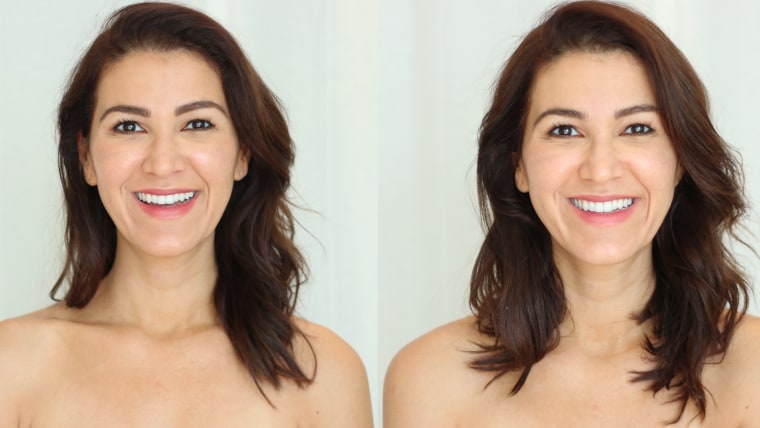
If you're looking for a two-in-one, facial-meets-meditation experience, facial cupping might be right for you. My skin felt plumper and more luminous afterward, but I'm not sure if that was just the post-treatment high.
“For real, long-lasting beauty benefits, I recommend using a retinol treatment or spending your money on a laser, such as Fraxel, Clear +Brilliant or microneedling to promote collagen regeneration and long-term anti-aging benefits,” Dr. Schweiger said.
Still, this treatment showed me that reducing the stress and tension I was holding in my facial muscles felt great, even if it's a short-term solution. I’d likely only book the treatment again for a special occasion, especially if it's high-stress time. There’s something to be said about the escapism of such a treatment to quiet a mile-a-minute mind.
Now that I’ve learned the basics of facial massage to try at home, I have begun incorporating it into my routine as I wash and moisturize my face. Why not wash puffiness and a throbbing headache away after a long day if it just involves a few finger dance moves of effort?
Then again saying goodbye to that $45 bottle of acne cream would also lower my stress. Maybe one day...
This story was originally published on Oct. 24, 2017.

